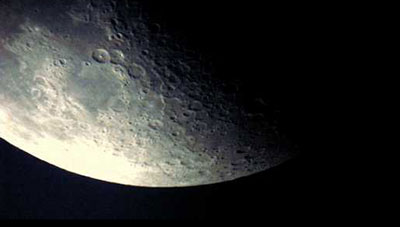| Aug 27, 2012 |
Scientists surprised by what's under Moon's surface
|
|
(Nanowerk News) Immersed deep within the moon is much more water—maybe 100 times more—than scientists ever suspected. This finding by a team of researchers from Case Western Reserve University, as well as the Carnegie Institution for Science and Brown University, means the moon's interior may resemble the Earth's— bolstering the theory that the moon and Earth have shared origins, while simultaneously raising questions about a prevailing theory of how the moon was formed.
|
|
James Van Orman, PhD, a Case Western Reserve geological sciences professor and author of a May 26 Science Express paper about the discovery, clarifies: "If, as scientists commonly believe, a large planetary body hit the Earth, throwing into orbit materials that ultimately formed the moon, how did the moon retain so much moisture despite all the energy from such a giant impact?"
|
 |
|
Van Orman and his colleagues found the unexpectedly abundant water in material called lunar melt inclusions. With state-of-the-art scientific instruments, the researchers examined the ancient molten material, which was trapped inside crystals that, in turn, were housed within tiny volcanic glass beads. The orange beads, found in soil samples collected in 1972 by the Apollo 17 astronauts, arose from volcanic eruptions deep inside the moon and protected the material within them from breaking away during the explosions. By measuring pre-eruption volatile elements within the beads, the scientists were able to estimate the amount of water inside the moon.
|
|
Many mysteries about lunar formation linger, emphasizes Van Orman, who hopes next to answer, "Where did all the water come from?" Sorting out this piece of the puzzle, the scientist says, "is really important for understanding how bodies within the solar system have evolved."
|

